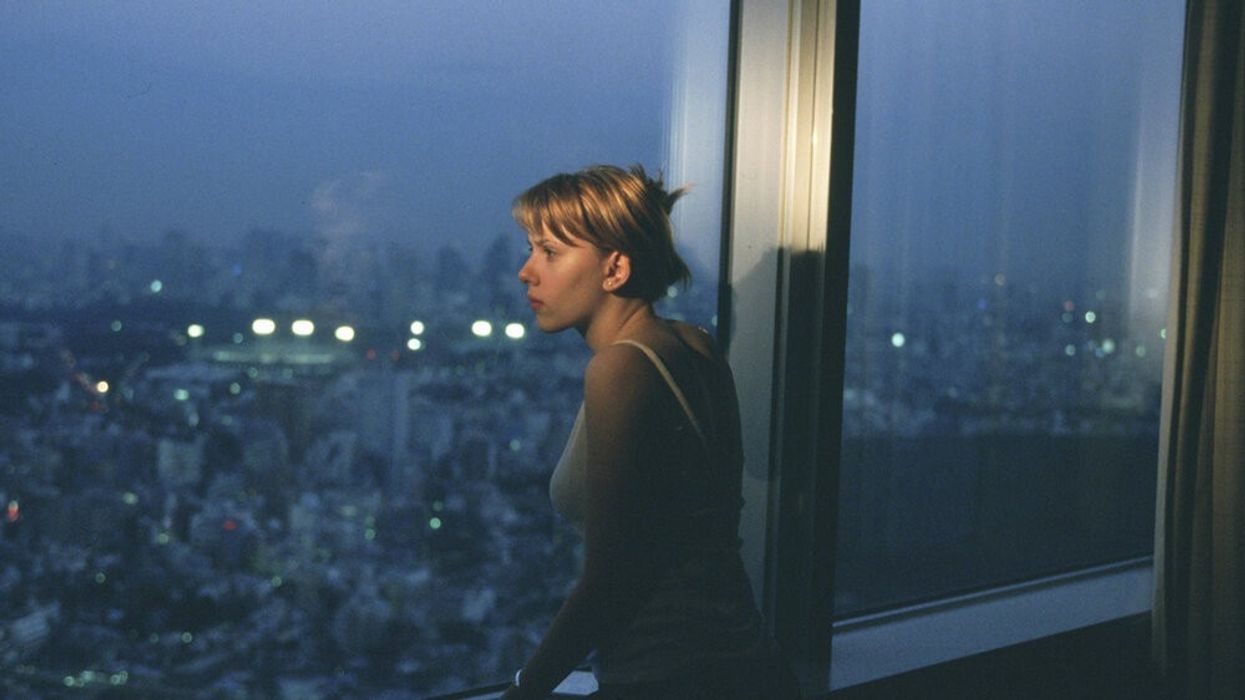How ‘Lost in Translation’ Creates a Deeper Level of Intimacy Through Its Location
There is no better way to emphasize a story's theme than perfectly using the location.

Lost in Translation is a beloved romantic comedy, and has been ever since its release. The film resonated with everyone on a level of emotional intimacy due to its portrayal of feeling lost in the world. Everyone can resonate with Bob Harris (Bill Murray) who is stuck with his unfulfilling job, or Charlotte (Scarlett Johansson) who just wants to find her place in the world.
Sofia Coppola’s balance of humor and melancholy create an experience that is grounded in a feeling that is all too familiar to all of us. What makes this film great is how it tells a story that we are all familiar with within a place that is unfamiliar to most people who don’t live in Japan.
Rather than attempting to answer the great question of, “Who am I?” or “What is my life’s purpose?” Lost in Translation makes an effort to find comfort in the unknown.
The connection between Bob and Charlotte
Bob is a middle-aged actor who has found himself lost in a life without passion or purpose. Rather than doing what he wants to do, Bob is doing what he feels he has to do to survive. Unlike Bob, Charlotte doesn’t know who she is or what she wants out of life. She is on a quest to find her authentic self. Both characters are going through major life issues and feel completely alone on their journey.
But they begin to feel as if they have a place in the world after they meet in the hotel bar 30 minutes into the film.
Bob becomes a type of life mentor to Charlotte, helping her discover herself through the simple joys of life and meaningful conversation. Bob and Charlotte’s relationship blossoms, but not in the traditional romantic way. There are no kisses or dramatic proclamations of love for one another; they have moments of shared intimacy that exist in their short walks, a night of karaoke, or a night out that becomes an expression of their love for one another.
Their relationship is quiet and meaningful. The relationship only happens in the audience’s mind while the characters are allowed the space to state their wants and desires. In the end, that is all anyone wants: a place in the world to say what you want, and someone there to support you till you get it.

Why did Coppola choose Tokyo as the location?
Location is crucial in any film. It has the power to become a character itself and can emphasize the feeling that is unique to that part of the world.
Tokyo in Lost in Translation is the only location that could work in the film because of how the difference in culture affects the main characters. Whether it is noticing the cultural differences, exploring lifestyles, or the traditional life of the Japanese, the spiritual awakening of Bob and Charlotte comes from the unique lifestyle of Tokyo.
Lost in Translation is Sofia Coppola’s love letter to Tokyo. In her 20s, Coppola spent time in the city and found people and places that resonated with her, allowing her to find her own footing or voice in the world. Like Coppola herself, Tokyo is a mix of tradition and modernism. It’s a city that says you can do both flawlessly without having to compromise any part of yourself.

Coppola’s visual intentions with the location
Coppola created a 40-page book of photography for the cast and crew to understand how she wanted to film to be in conversation with Tokyo. Lance Acord, the director of photography, wanted to maximize the natural lighting of the city. Acord stayed true to this promise and never used artificial lighting in any of the exterior night scenes.
Lost in Translation was shot in a freeform, stealthy, almost documentary style to capture the loneliness of the characters. Many of the locations like the subway station and Shibuya crossing were shot at without any permits to capture the raw feeling of each moment. The cast and crew avoided police by keeping the crew very small and opting for still, simple shots.
Coppola wanted to capture Tokyo with spontaneous intimacy, much like a home movie. She shot on high-speed film stocks to suggest the homemade intimacy that makes the characters feel grounded. The result was a deeply intimate film that pulled on a familiar heartstring for many people.

In a way, Lost in Translation is a fantasy of meeting someone on your travels. The secret joy of having someone by your side as the two of you navigate a new place and find little parts of yourself that you never knew existed. It’s not a physical romance, but an emotional one.
The truth is, Lost in Translation is about the intimacy of human connection. Through all of the love, loss, disorientation, and sleepless nights in a new place, being able to find someone who understands or wants to understand you is a trip on its own. The spark of meeting someone new teaches us that sometimes unexpected things can happen, and the location deeply affects how this message is told. It is up to us to decide how we feel about the unexpected and how we are going to let those moments define who we are.
What are your thoughts on the location acting as a third character in a film? Let us know in the comments below.
Source: William Adiguna











